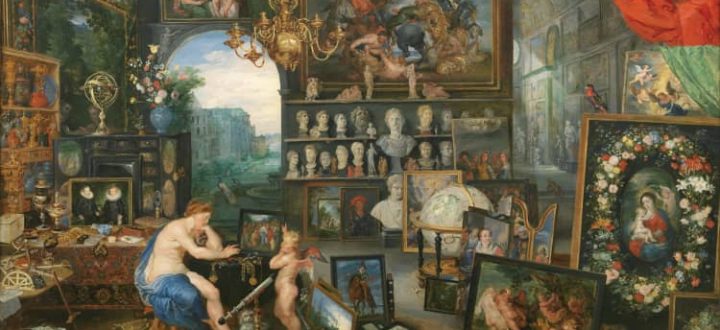
Female Collectors of the Prado Museum
For several years now, the Prado Museum has opened a study topic on gender and art, and in particular on the female contribution to the magnitude and quality of the museum’s collections, which are unique in the world. Today we will discover the female collectors of the Prado Museum.
This year again, a symposium was organized to invite art historians and researchers to deliver the results of their studies on the issue, an opportunity to rewrite the permanent tour of the museum, and to propose a new point of view on the works to be visited today : “El Prado en femenino“.
This study has made it possible to realize that the treatment of female subjects or female artists was not always the same as their male homologues in the museum, or that the political impact of queens, princesses and sovereigns was also once through patronage, a fact too often forgotten.
It is already important to remember that the very creation of the museum in 1819 was largely promoted by the work of Maria Isabel of Braganza, or Maria of Portugal (1797-1818), Queen of Spain and wife of Ferdinand VII, who gave the impulse to create the museum. She is depicted as the patron of the arts in the painting by Bernardo Lopez Piquer, below.

But many sovereigns also contributed to the richness of the royal collections, such as Isabella Ist of Castile, Elisabeth of France, or Mariana of Austria, to name but a few, women who, in spite of the difficulty of managing finances, traveling or simply taking a place in society at that time, succeeded through their influence and their network in commissioning and acquiring true masterpieces.
This is the case of Mary of Hungary (1505-1558), Queen of Hungary and Bohemia, and sister of Charles the Vth, who accumulated a large collection of works by Titian, and created a political image of her brother Emperor through the arts.
One of the paintings of the Italian master, “Charles V at the Battle of Mühlberg” (1548), representing the crushing victory of Charles V against the Protestant revolt in northern Europe, is for example a very political commission for the time. Unable to take an active part in the battle other than by writing letters and so preparing for the conflict from a distance, Mary of Hungary used the symbolic power of painting to present her brother as an impassive, powerful ruler who should never be attempted to be betrayed again.

The Bohemian queen was also behind the commission of sculptures representing the royal family in the San Jeronimo cloister, which we mentioned before, passing their achievements to posterity.
And among the queen collectors, Isabel Clara Eugenia (1556-1633), infanta of Spain, sovereign of the South Netherlands and archduchess of Austria, also stands out. She was responsible for the acquisition in Spain of an impressive quantity of works by Peter-Paul Rubens presented in the Prado museum; the largest collection of the Flemish master in the world!
In addition to the royal portraits that she commissioned from him during her lifetime, she was also responsible for sending the “Allegories of the Five Senses”, made with Jan Brueghel the Elder, to Madrid ; paintings which are still on display in the museum today. An image of the power of the Archduchess at the Madrid court, a reminder of the ties that united Flanders and Spain at the time, these paintings also evoke the wealth and abundance of the Habsburg Empire, as well as Isabel Clara Eugenia’s own developed taste for Flemish painting. The queen and her husband, the Archduke Albert of Austria, are themselves depicted in one of the paintings decorating the room.


Like these few works, many others were acquired or commissioned by women, and some of them are among the most famous masterpieces of the museum, such as Rogier Van der Weyden’s “The Descent from the Cross”, Titian’s “Sisyphus” and “Tityus”, or even the famous seven Muses of the Arts, sculptures from the first century that welcome visitors to one of the Prado’s most beautiful rooms.
In all periods and all over the world, women have collected art objects, whether it be for artistic reasons, political ambitions or power issues, and have left magnificent examples of architecture, sculpture, medals and coins, graphic arts or writings, which are today among the only traces of their influence on history.
And if you liked this post about the female collectors of the Prado Museum and you want to know much more about Madrid, do not miss our free tour Madrid ! You will discover a lot of new things about this amazing city!